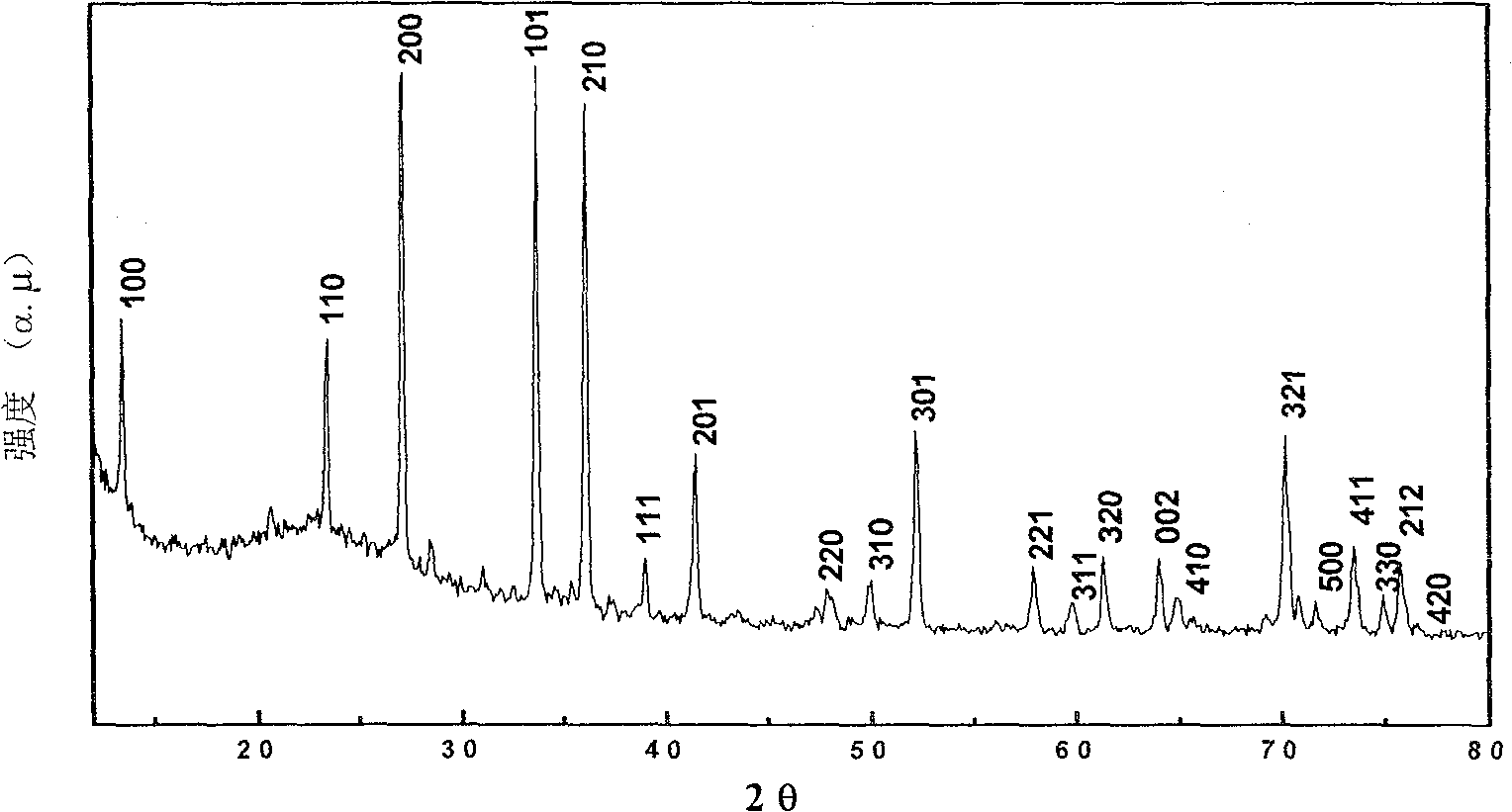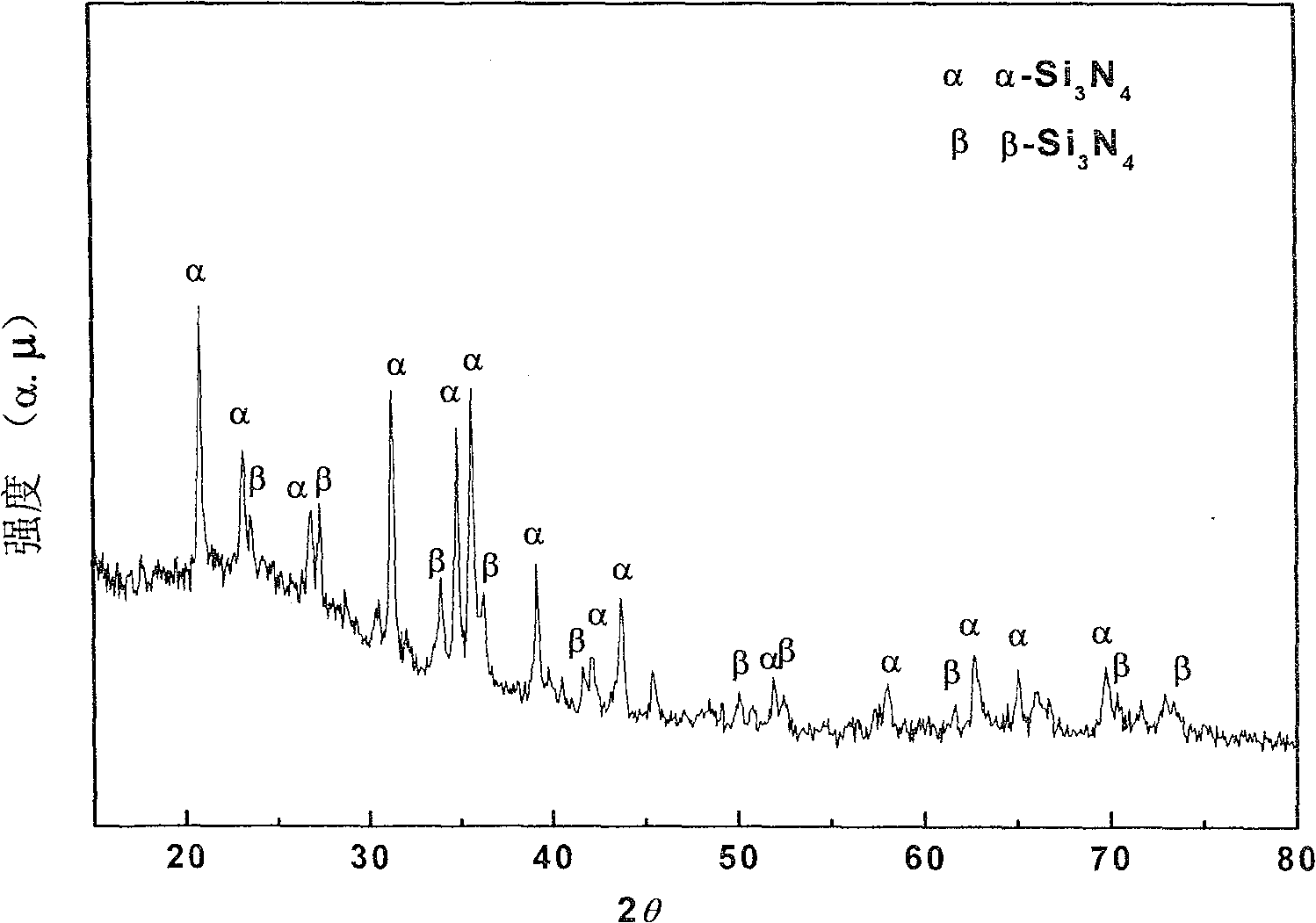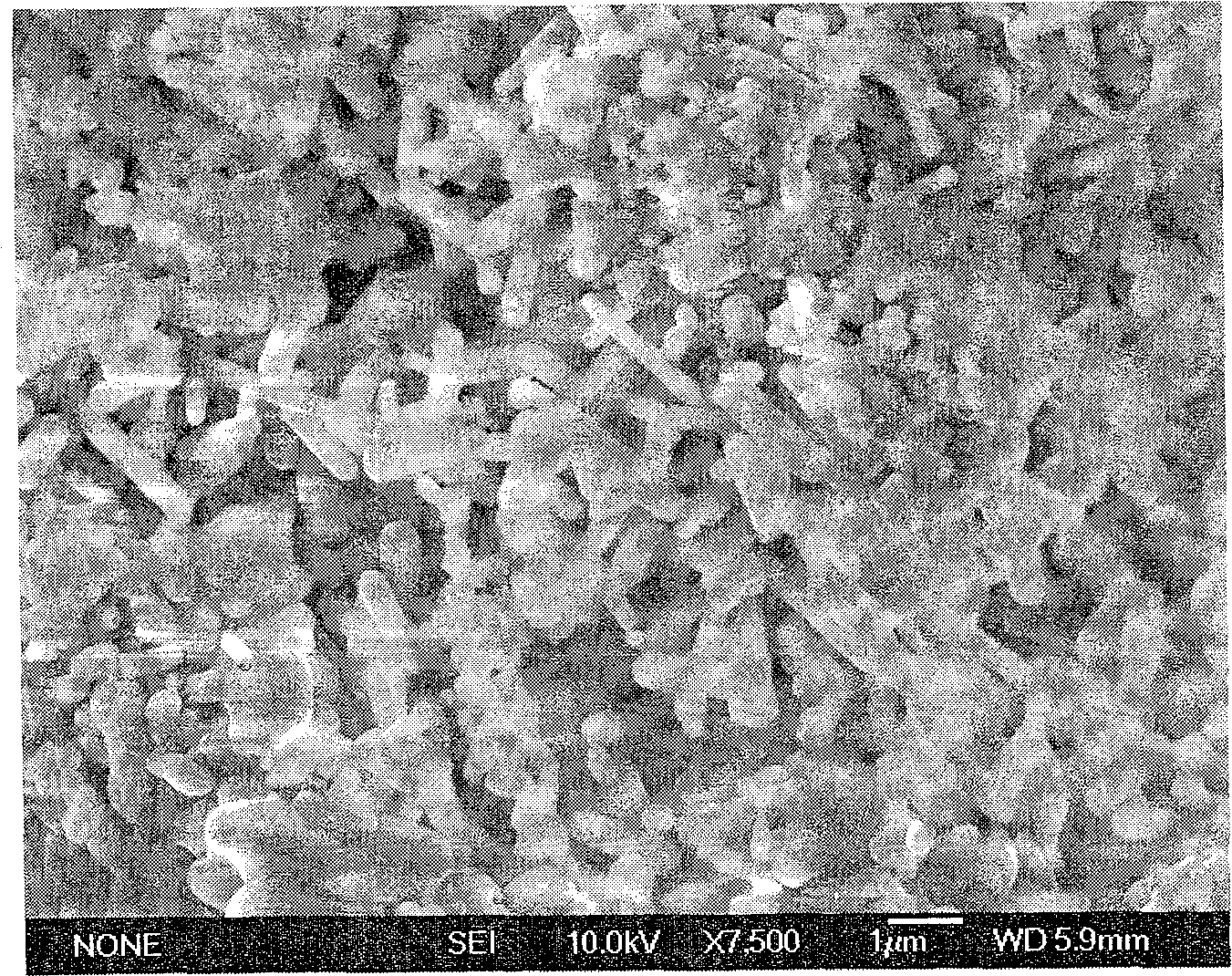Method for synthesizing silicon nitride nano material under low temperature by solvent hot reaction
A solvothermal reaction, nanomaterial technology, applied in nanotechnology, nanotechnology, nanostructure manufacturing, etc., can solve the problems of high reaction temperature and inability to obtain crystalline Si
- Summary
- Abstract
- Description
- Claims
- Application Information
AI Technical Summary
Problems solved by technology
Method used
Image
Examples
Embodiment 1
[0023] Example 1: Prepare β-Si by reacting sodium azide, magnesium powder and silicon tetrachloride 3 N 4 Nanorod-based silicon nitride powder
[0024] Take 1g of sodium azide, 0.5g of magnesium powder and 10mL of silicon tetrachloride, put them into a special stainless steel 18mL reaction kettle, use nitrogen to remove the air in the kettle, seal it and place it in a resistance crucible boiler, and make three groups at 200°C ±5°C, 250°C±5°C, 300°C±5°C for 10 hours; after stopping heating, cool the reactor to room temperature naturally; open the reactor and remove unreacted SiCl 4 , the resulting product was washed with acid and water, centrifuged and dried to obtain β-Si 3 N 4 Nanorod-based silicon nitride powder products. Vacuum-dried at 50°C for 6 hours to obtain an off-white powder product.
[0025] Cu Kα rays (wavelength The scanning step speed is 0.08° / sec) as the diffraction light source for X-ray diffraction analysis of the product.
[0026] figure 1 It is the...
Embodiment 2
[0027] Example 2: Prepare α-Si by reacting sodium azide, iron powder and silicon tetrachloride 3 N 4 Nanowire-based silicon nitride powder
[0028] The SiCl 4 , NaN 3 Mix with iron powder, seal in an autoclave, and react at 250°C for 10 hours; the product is pickled, washed with water, centrifuged and dried to obtain α-Si 3 N 4 Nanowire-based silicon nitride powder. see results figure 2 .
[0029] figure 2 α-Si prepared at 250°C with metal iron powder as reducing agent 3 N 4 X-ray diffraction spectrum (XRD) of the nanowire-based silicon nitride product. It can be seen from the figure that the sample is α-Si 3 N 4 and β-Si 3 N 4 mixed phase.
Embodiment 3
[0030] Embodiment 3: compare the impact of various metal additives on experiment (as Figure 9 shown)
[0031] It was found that only metal magnesium powder, calcium particles and aluminum powder are effective for the formation of β-Si at low temperature 3 N 4 It has a promoting effect, among which magnesium powder has the best effect; metal iron powder, sodium and nickel powder can form α-Si at low temperature 3 N 4 There is a promotional effect.
[0032] Use H700 type transmission electron microscope (TEM) and JSM-6700F type scanning electron microscope (SEM) to observe the morphology and particle size of product:
[0033] From the SEM photo of the product image 3 It can be seen that the micrographs of nanowires with different contrasts show that the nanorods are uniform in thickness and have a diameter of 100-800 nm. Figure 4 is the Si prepared by way 2 3 N 4 SEM photos of nanowires, with a diameter of 30-125 nanometers and a length of tens of microns. Figure 5 ...
PUM
| Property | Measurement | Unit |
|---|---|---|
| diameter | aaaaa | aaaaa |
| diameter | aaaaa | aaaaa |
| diameter | aaaaa | aaaaa |
Abstract
Description
Claims
Application Information
 Login to View More
Login to View More - R&D
- Intellectual Property
- Life Sciences
- Materials
- Tech Scout
- Unparalleled Data Quality
- Higher Quality Content
- 60% Fewer Hallucinations
Browse by: Latest US Patents, China's latest patents, Technical Efficacy Thesaurus, Application Domain, Technology Topic, Popular Technical Reports.
© 2025 PatSnap. All rights reserved.Legal|Privacy policy|Modern Slavery Act Transparency Statement|Sitemap|About US| Contact US: help@patsnap.com



